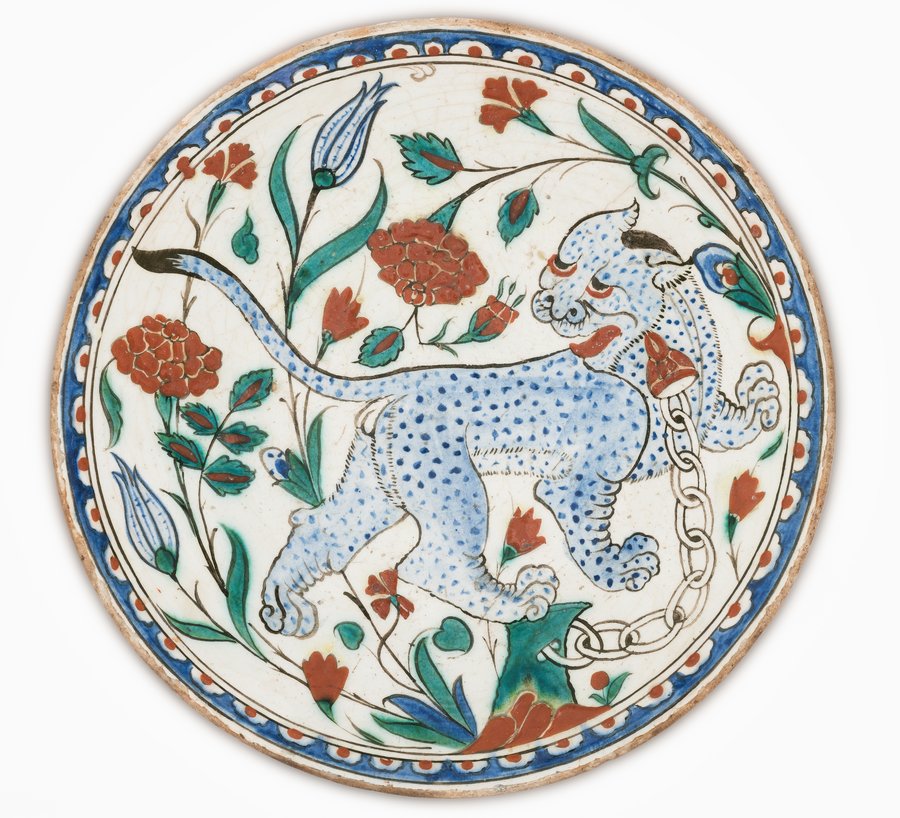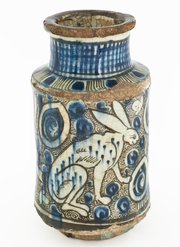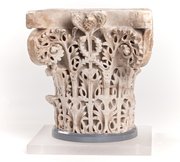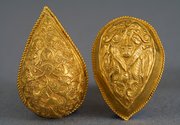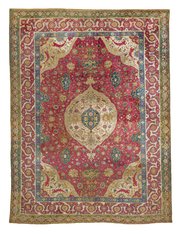
Iznik Dish
Museum of Islamic Art
- Title:
- Iznik Dish
- Production place:
- Iznik
- Date:
- 1600 - 1610
- Period:
- Ottoman
- Title:
- Iznik Dish
- Production place:
- Iznik
- Date:
- 1600 - 1610
- Period:
- Ottoman
- Material:
- Fritware, Pigment, Glaze
- Technique:
- Throwing, Underglaze painting, Glazing
- Dimensions:
- 4.9
- Diameter:
- 30.2
A blue, snarling leopard paces amongst carnations, tulips and roses on this dish from Iznik, Turkey. Chained to a tree stump and with a bell around its neck, the animal turns back its head, its tongue lolling, arrested in dramatic movement. The garden in the background, painted in a naturalistic palette of viridian green, ‘sealing wax’ red, and a diluted cobalt blue, stands in peaceful contrast, perhaps a metaphorical representation of the victory of good over evil: the leopard’s destructive power has been overcome and the garden is secure once more.
Leopards feature several times in the famed Süleymanname manuscript of 996 AH/1588 CE, as encountered by Sultan Süleyman on his hunting expeditions. The representation on this dish also recalls the motif of the chained lion in Ottoman manuscripts of the 11th century AH/17th century CE. This series of designs was probably inspired by living specimens seen in the Sultan’s menagerie of wild animals, which was kept in the Aslanhane (‘lion house’), a neighbor to the painters’ studio. Chinese influence is apparent here, too, a testament to the trade connections and cultural exchange between China and the greater Islamic world beginning with the early dynasties. The potter of this dish has converted the Chinese qilin, a mythical creature resembling a dragon seen on earlier (8th century AH/14th century CE) Chinese bowls, into an equally ferocious animal grounded in reality.
